Under the African sun.
Hot and fierce as usual in summer, but thankfully we are used to the sun, and also its dangers. The daily power cuts also keep us dodging around.
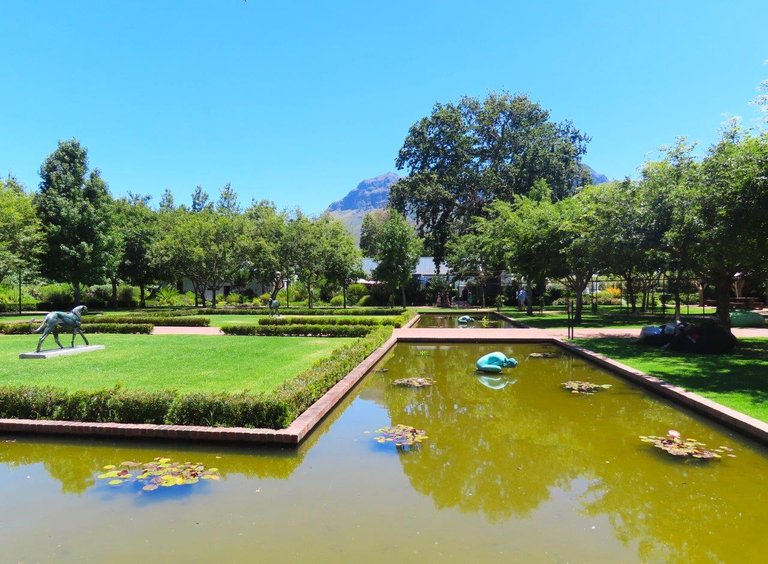
Going around from shade to shade under the trees to see what I could find in the pond.
Odonata is the collective term for dragonflies and damselflies. They fall into two suborders, namely Anisoptera (true dragonflies) and Zygoptera (damselflies).
Dragonflies and damselflies are readily distinguished from one another, by differences in their build, their wing shape, and their eye structure. Damselflies are slim-bodied, have similar four- and hind wings that taper narrowly where they join the body, and their eyes are widely separated on their heads.
Dragonflies, by contrast, are more robustly built, and their four-and hind wings differ in shape and are broader-based than those of damselflies.
Look how the sun blanches this dragonfly below.
I moved to the mountain side of the pond to try to get some color.
This below is a male Navy Dropwing (Trithemis furva). Look at his beautiful colors.
And here we have a male Red-veined Dropwing (Trithemis arteriosa).
The scientific study of Odonata is known as odonatology - not to be confused with odontology (forensic dentistry). Not surprisingly, the two names share a common root. Odonata meaning a "toothed jaw" in Greek and in dragonflies referring to the formidable mandibles of the larval form. The use of the word "dragonfly" as a catch-all that sometimes includes damselflies, is confusing.
I have often seen posts with damselflies called dragonflies, and it is important for us to understand the differences.
Sitting at each end of this water plant to protect their territory.
The blue's territory is at the left, and the red's territory is at the right.
A lovely mountain shot to end the post.
In Germany, dragonfly watching is a popular outdoor activity. Dragonflies as a group are called Libellen, with Klein Libellen used for damselflies, and Gross Libellen used for dragonflies. In France, they call them demoiselles or monsieurs. In Italy, they refer to them as cavallocchio. In Japan, where dragonflies have a special place in the country's culture and folklore, there are even nature reserves created specifically to protect the dragonflies.
Note: All dragonfly information taken from our book "A guide to Dragonflies and Damselflies of South Africa", by Warwick and Michele Tarboton. ISBN: 978-177584-184-5
I hope you have enjoyed the pictures and the story.
Photos by Zac Smith-All Rights Reserved.
Camera: Canon PowershotSX70HS Bridge camera.
Thank you kindly for supporting this post.
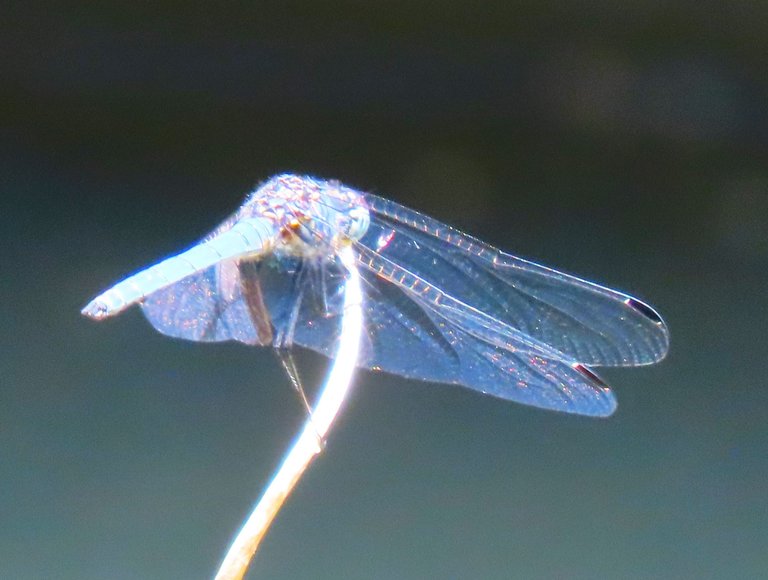

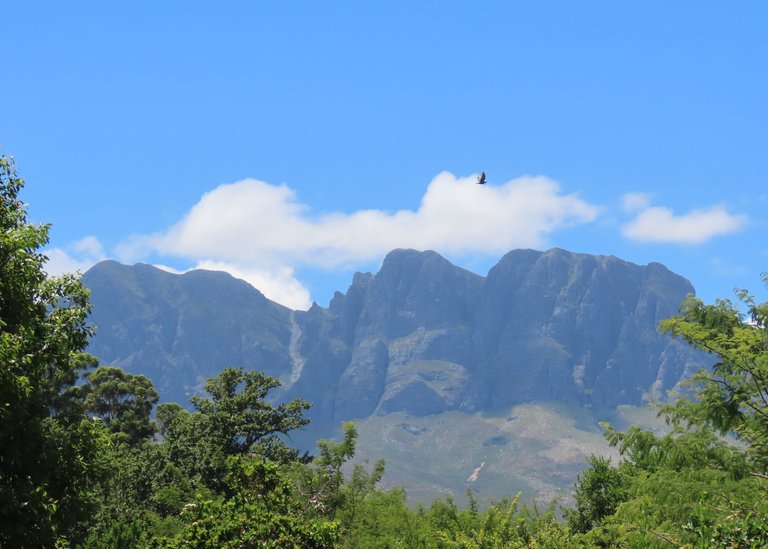
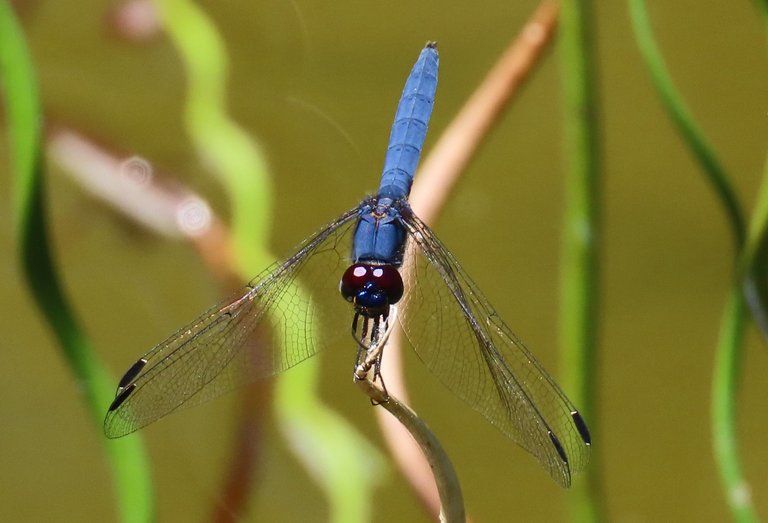

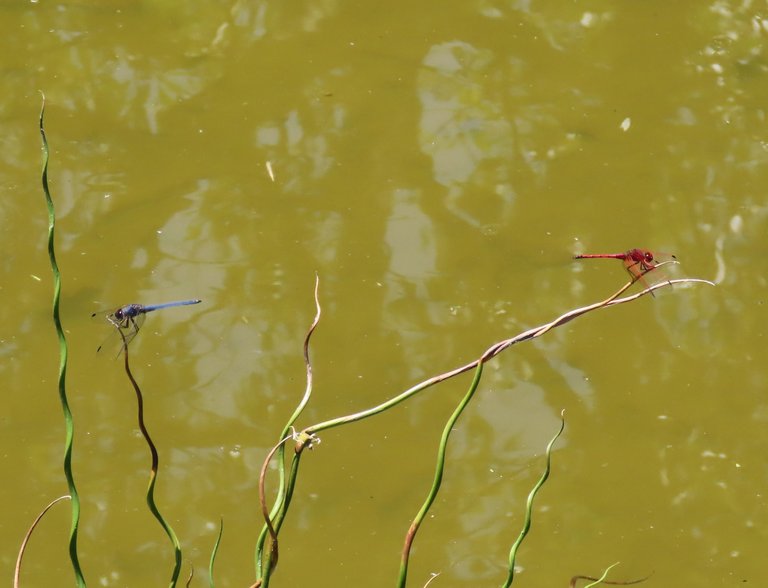
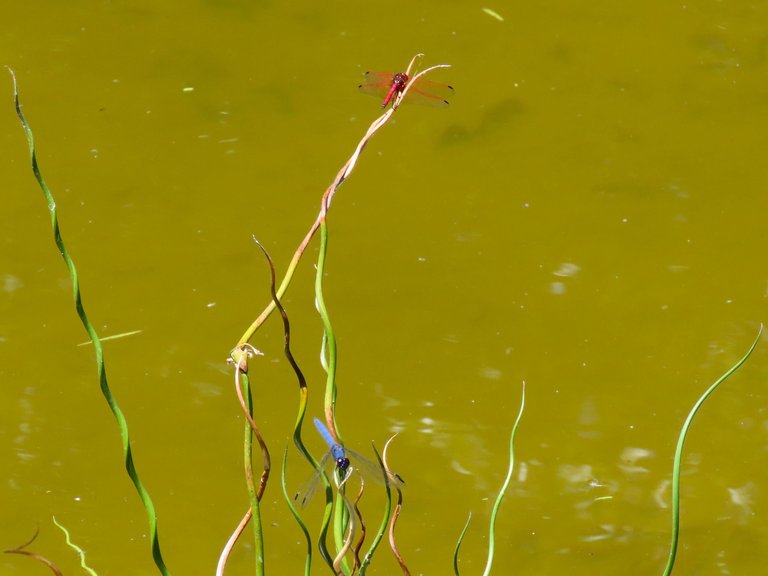

This post has been manually curated by @steemflow from Indiaunited community. Join us on our Discord Server.
Do you know that you can earn a passive income by delegating to @indiaunited. We share more than 100 % of the curation rewards with the delegators in the form of IUC tokens. HP delegators and IUC token holders also get upto 20% additional vote weight.
Here are some handy links for delegations: 100HP, 250HP, 500HP, 1000HP.
100% of the rewards from this comment goes to the curator for their manual curation efforts. Please encourage the curator @steemflow by upvoting this comment and support the community by voting the posts made by @indiaunited.
Thank you kindly for the support @steemflow and the @indiaunited team.
It is interesting what you said about the differences between dragonflies and damselflies, I can't tell them apart, the other day I saw a very intense metallic green colored one at my window and the part of the eyes was like silver, it looked like a soldier or something extraterrestrial.
Damselflies are smaller than dragonflies and their eyes are wide apart. They also don't open their wings when they sit, as they fold them back against their bodies.
I cannot tell what the one was that you at your window, unless you have a photo of it, but it sounds very beautiful. !LOL
lolztoken.com
But I've lived here for last 216 years, and haven't heard anything unusual.
Credit: reddit
@skiptvads, I sent you an $LOLZ on behalf of papilloncharity
(1/10)
It was beautiful and strange at the same time, lucky in the city there still a large variety of insects, but other like butterflies and even some birds like colibry are starting to become hard to find, the city often start to push them out 🤔
Bad news always when nature's residents get "pushed" out.
This pair of blue and red dragonflies reminded me of aquarium fish - "cockerels". Very similar!r
I have never seen those, and they must be beautiful.